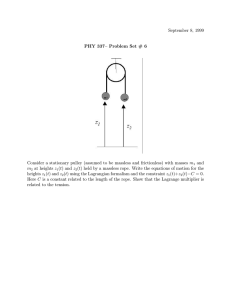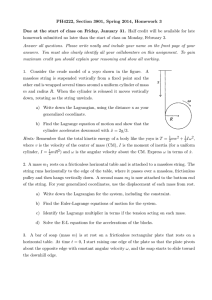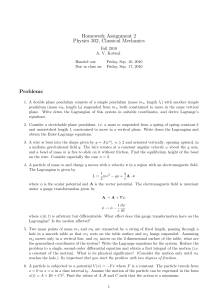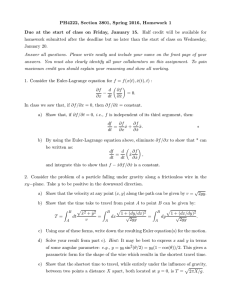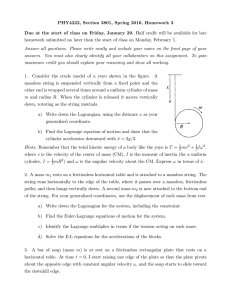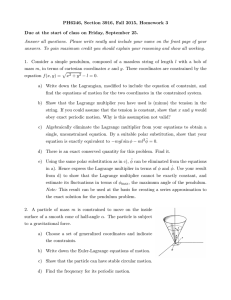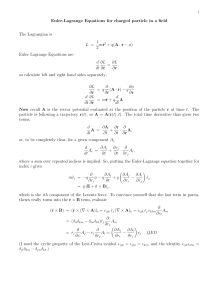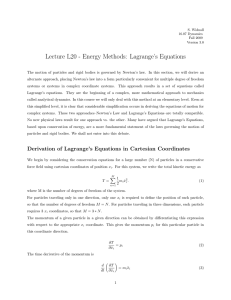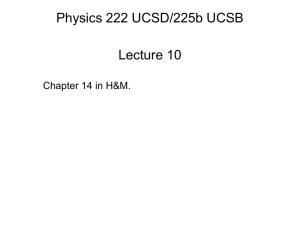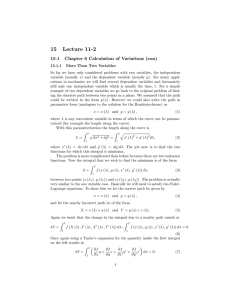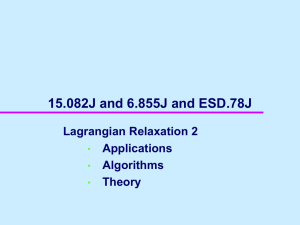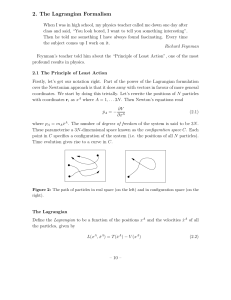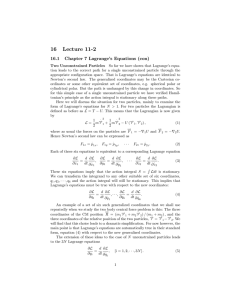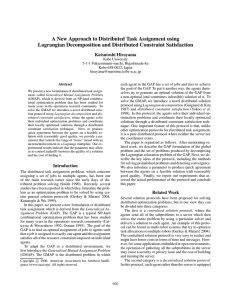PH4222, Section 3801, Spring 2016, Homework 2
advertisement
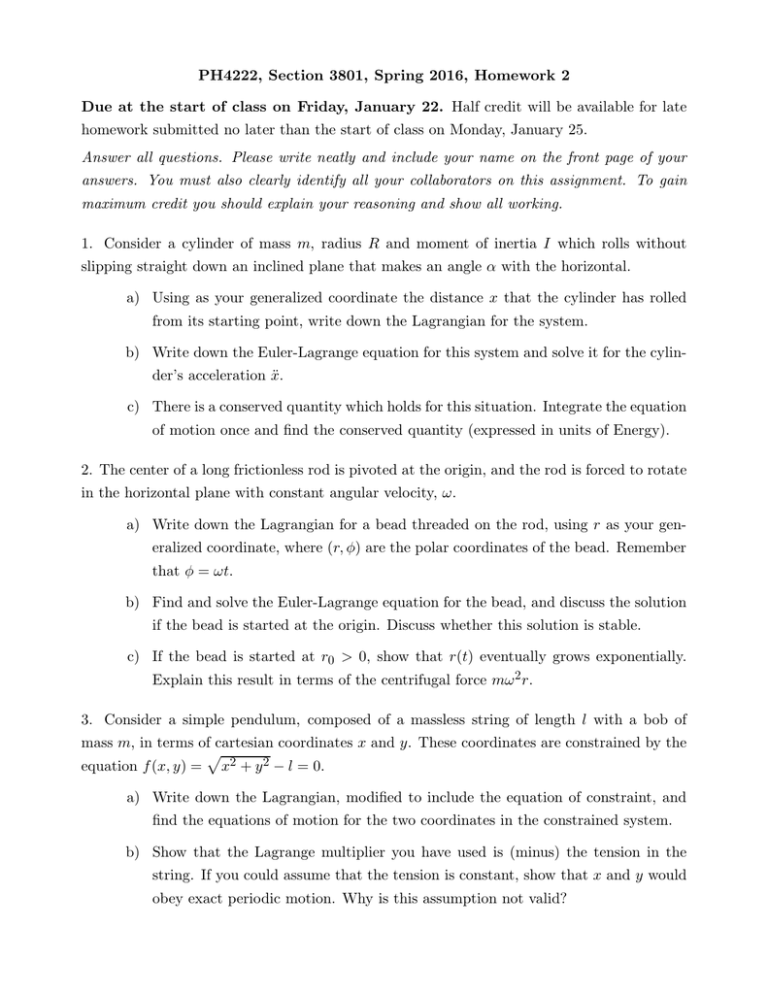
PH4222, Section 3801, Spring 2016, Homework 2 Due at the start of class on Friday, January 22. Half credit will be available for late homework submitted no later than the start of class on Monday, January 25. Answer all questions. Please write neatly and include your name on the front page of your answers. You must also clearly identify all your collaborators on this assignment. To gain maximum credit you should explain your reasoning and show all working. 1. Consider a cylinder of mass m, radius R and moment of inertia I which rolls without slipping straight down an inclined plane that makes an angle α with the horizontal. a) Using as your generalized coordinate the distance x that the cylinder has rolled from its starting point, write down the Lagrangian for the system. b) Write down the Euler-Lagrange equation for this system and solve it for the cylinder’s acceleration ẍ. c) There is a conserved quantity which holds for this situation. Integrate the equation of motion once and find the conserved quantity (expressed in units of Energy). 2. The center of a long frictionless rod is pivoted at the origin, and the rod is forced to rotate in the horizontal plane with constant angular velocity, ω. a) Write down the Lagrangian for a bead threaded on the rod, using r as your generalized coordinate, where (r, φ) are the polar coordinates of the bead. Remember that φ = ωt. b) Find and solve the Euler-Lagrange equation for the bead, and discuss the solution if the bead is started at the origin. Discuss whether this solution is stable. c) If the bead is started at r0 > 0, show that r(t) eventually grows exponentially. Explain this result in terms of the centrifugal force mω 2 r. 3. Consider a simple pendulum, composed of a massless string of length l with a bob of mass m, in terms of cartesian coordinates x and y. These coordinates are constrained by the p equation f (x, y) = x2 + y 2 − l = 0. a) Write down the Lagrangian, modified to include the equation of constraint, and find the equations of motion for the two coordinates in the constrained system. b) Show that the Lagrange multiplier you have used is (minus) the tension in the string. If you could assume that the tension is constant, show that x and y would obey exact periodic motion. Why is this assumption not valid? c) Algebraically eliminate the Lagrange multiplier from your equations to obtain a single, unconstrained equation. By a suitable polar substitution, show that your equation is exactly equivalent to −mgl sin φ − ml2 φ̈ = 0. d) There is an exact conserved quantity for this problem. Find it. e) Using the same polar substitution as in c), φ̈ can be eliminated from the equations in a). Hence express the Lagrange multiplier in terms of φ and φ̇. Use your result from d) to show that the Lagrange multiplier cannot be exactly constant, and estimate its fluctuations in terms of φmax , the maximum angle of the pendulum. Note: This result can be used at the basis for creating a series approximation to the exact solution for the pendulum problem. 4. Re-consider a double Atwood machine constructed as follows. A mass 4m is suspended from a massless string which passes over a massless pulley on frictionless bearings. The other end of this string supports a second similar pulley, over which passes a second massless string supporting a mass of 3m at one end and m at the other. a) Using as four suitable coordinates the displacements of the three masses and the moving pulley, and introducing two separate constraints between them, set up a constrained Lagrangian to describe the system. b) Write down the Euler-Lagrange equations for all four degrees of freedom. c) From three of the E-L equations, relate your two Lagrange multipliers to the tension in each of the two strings. d) The fourth E-L equation gives a relation between the two tensions. Use it to help explain why the top pulley rotates while carrying equal weights on both sides. 5. The Lagrangian for a non-relativistic particle of mass m and charge q moving in an external electromagnetic field, can be given by: 1 L(r, ṙ, t) = m(ẋ2 + ẏ 2 + ż 2 ) − q(V − ẋAx − ẏAy − żAz ), 2 where the scalar V and the components Ai of the vector A are all functions of (x, y, z, t). a) Write down the Euler-Lagrange equations for each of the three coordinates. b) The equation of motion for the particle can be written as mr̈ = q(E + ṙ × B). By suitable identification of terms, express both E and B in terms of V and A. 2
